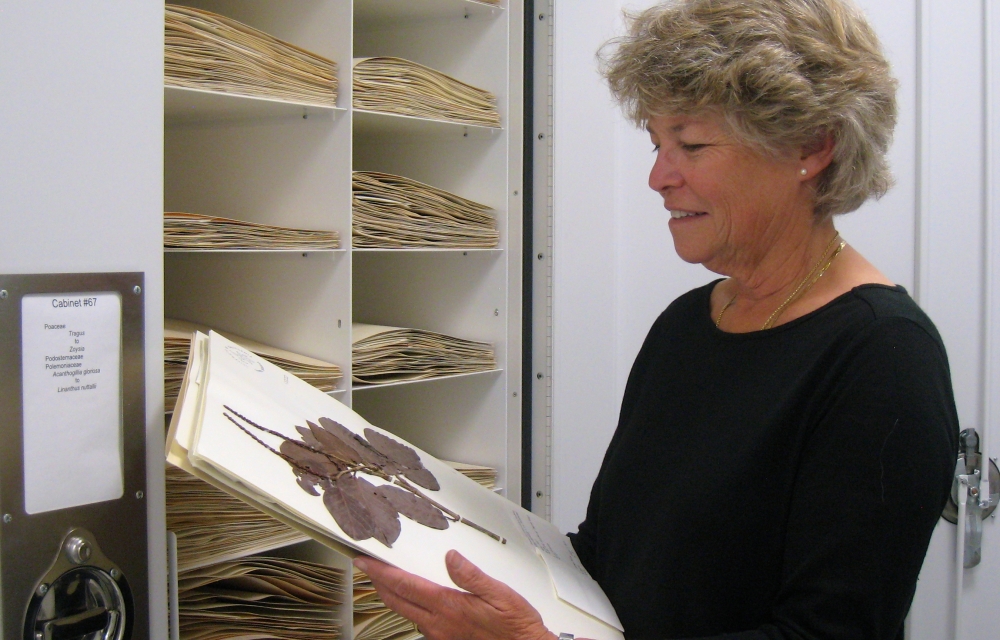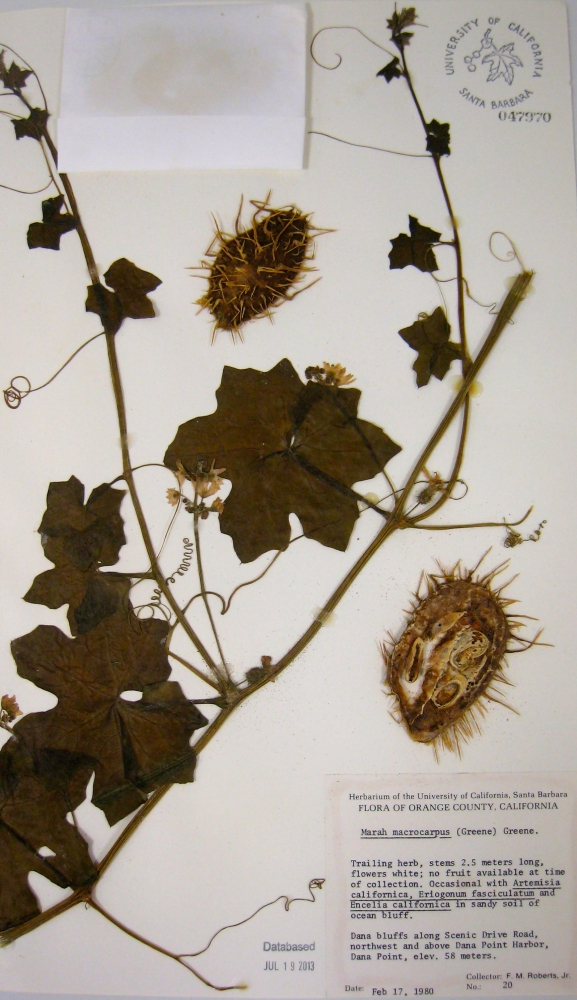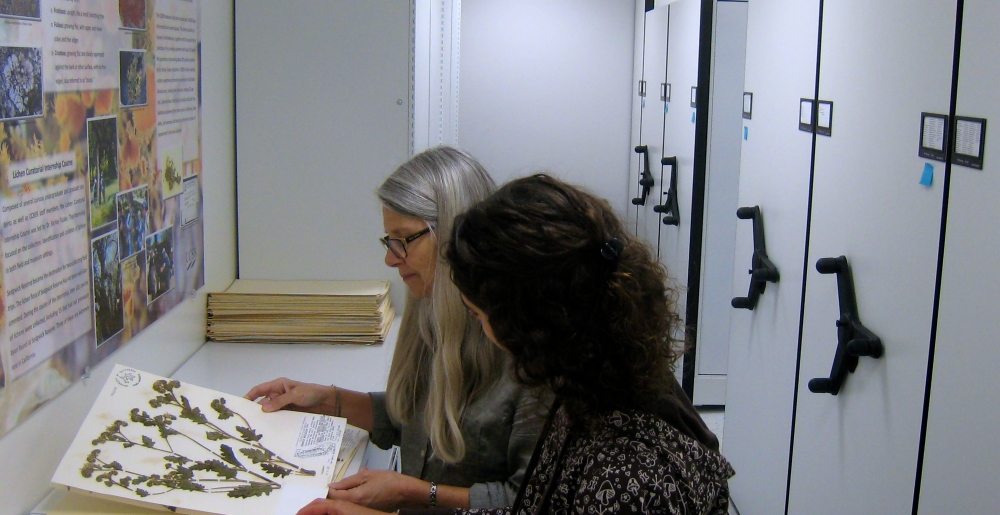
Plant Specimens Go Digital


UC Santa Barbara doesn't have a natural history museum, but the Cheadle Center for Biodiversity and Ecological Restoration (CCBER) comes close. Among other things, CCBER houses the campus's plant and vertebrate collections, which include some 120,000 individual specimens preserved and maintained for teaching and scientific research.
Now, with a one-year Museums for America grant awarded by the Institute of Museum and Library Services (IMLS), CCBER scholars will digitize more than 70,000 specimens in the center's vascular plant collection. The funds will be used to improve databasing workflows, increase efficiency and speed, and complete the data entry of the remaining 80 percent of specimens that have yet to be digitized.
A center under the Office of Research, CCBER has a long and venerable history. In 1945, a faculty member started the herbarium, a collection of preserved plant specimens used for research and for teaching. Another faculty member founded the vertebrate collection, which consists of thousands of mammals, fish, amphibians and reptiles. In 1995, both collections came together under the umbrella of the Museum of Systematics and Ecology (MSE), which morphed into CCBER a decade later when MSE fused with the ecological restoration program.
"Formally, under our umbrella we have three major areas," said Jennifer Thorsch, the Katherine Esau Director of CCBER. "We have the ecological restoration arm, we have our education arm and we have the collections arm."
The IMLS grant required matching funds. "We have had a generous donation from William and Mary Cheadle, the son and daughter-in-law of the former UCSB chancellor," Thorsch said. "The campus also provided additional matching support. These contributions were instrumental to CCBER receiving the grant."
Under current staffing, funding and data-entry protocols, it would take more than seven years to complete the databasing of the remaining specimens. "Our challenge is to make the data available in the most timely way," said Laurie Hannah, CCBER's librarian and digital resources coordinator.
As project manager, Hannah will oversee an imaging technician and complete the post-processing of images and data capture of label information from herbarium sheets for addition to the database.
The herbarium houses each specimen on an acid-free paper sheet called a voucher. Each voucher consists of the preserved plant, sometimes a seed packet, and metadata about where the plant was found and in what type of habitat, the date it was collected and who collected it.
"Currently the way it works is, if somebody wants to look at specimens, they either formally ask for a loan to be sent to them or they come in here and ask for them to be pulled out of the cabinets and look at them here," Hannah explained.
Using Specify database software, CCBER staff will take a digital image of each specimen, extract the data from the label and translate it into a text file using optical character recognition so that the information can be added to the database.
"By making our data accessible, we not only will increase the use of our collections, which will be really valuable," Thorsch said, "but will also allow scientists to examine the collection online and decrease the number of specimens we need to send out on loan."
The digitization of the CCBER vascular plant collection will give UCSB faculty, students, CCBER staff, environmental consultants and the general public access to the valuable and historically significant collection, while at the same time contributing to a larger worldwide effort to digitize millions of biological specimens as quickly and efficiently as possible. The project will also provide opportunities for student interns to learn new skills, increase their interest in the work and potentially pursue employment or advanced degrees in museum studies or collection management.
"I think our education component is unique in terms of our museum curatorial internships for undergraduates," Thorsch said. "We're in the formal planning stages of offering a museum curatorial course.
"A much bigger vision for us is to work with other departments on campus that have collections and perhaps with other organizations, such as the Santa Barbara Botanic Garden, the Santa Barbara Museum of Natural History or the Santa Barbara Art Museum, to see if there might be interest and enough motivation to develop an undergraduate minor in museum studies," Thorsch added.
Related Links



